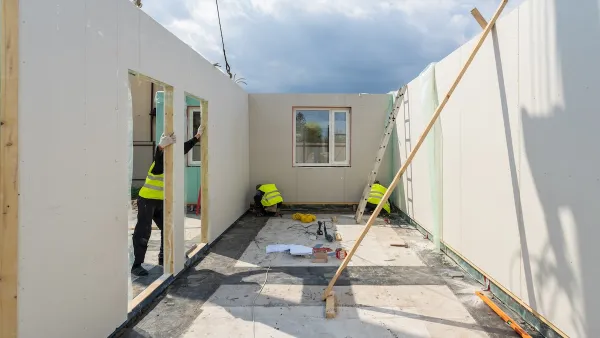Housing developers will no longer be required to dedicate land to roadway widening, which could significantly reduce the cost of construction and support more housing units.

Among the raft of bills signed by California Governor Newsom last week is Assembly Bill 3177, which prohibits local governments and agencies from requiring road widening next to new housing developments to achieve higher traffic flow, known as “level of service,” or “to achieve a desired roadway width.”
Under the new law, local governments would need to provide “substantial evidence” to require setting aside land for new roadway space, explains Melanie Curry in Streetsblog California. The law explicitly calls out a Los Angeles city law that calls for piecemeal “spot widening” in front of new developments, which often results in a zig-zag pattern that doesn’t improve traffic and eliminates thousands of square feet of land that could have been used for additional housing. While AB 3177 will eliminate this requirement for residential projects, the Los Angeles law will still apply to other types of developments.
According to the bill’s analysis, “A 2016 research study published in the Journal of Transport and Land Use found that road widening requirements in Los Angeles can cost developers over $10,000 per unit, resulting in up to hundreds of thousands of dollars being added to projects subjected to these requirements in certain instances.”
FULL STORY: Legislative Update: Ending Harmful Road Widening, and Redefining “Major Transit Stops”

National Parks Layoffs Will Cause Communities to Lose Billions
Thousands of essential park workers were laid off this week, just before the busy spring break season.

Retro-silient?: America’s First “Eco-burb,” The Woodlands Turns 50
A master-planned community north of Houston offers lessons on green infrastructure and resilient design, but falls short of its founder’s lofty affordability and walkability goals.

Delivering for America Plan Will Downgrade Mail Service in at Least 49.5 Percent of Zip Codes
Republican and Democrat lawmakers criticize the plan for its disproportionate negative impact on rural communities.

Test News Post 1
This is a summary

Test News Headline 46
Test for the image on the front page.

Balancing Bombs and Butterflies: How the National Guard Protects a Rare Species
The National Guard at Fort Indiantown Gap uses GIS technology and land management strategies to balance military training with conservation efforts, ensuring the survival of the rare eastern regal fritillary butterfly.
Urban Design for Planners 1: Software Tools
This six-course series explores essential urban design concepts using open source software and equips planners with the tools they need to participate fully in the urban design process.
Planning for Universal Design
Learn the tools for implementing Universal Design in planning regulations.
EMC Planning Group, Inc.
Planetizen
Planetizen
Mpact (formerly Rail~Volution)
Great Falls Development Authority, Inc.
HUDs Office of Policy Development and Research
NYU Wagner Graduate School of Public Service





























